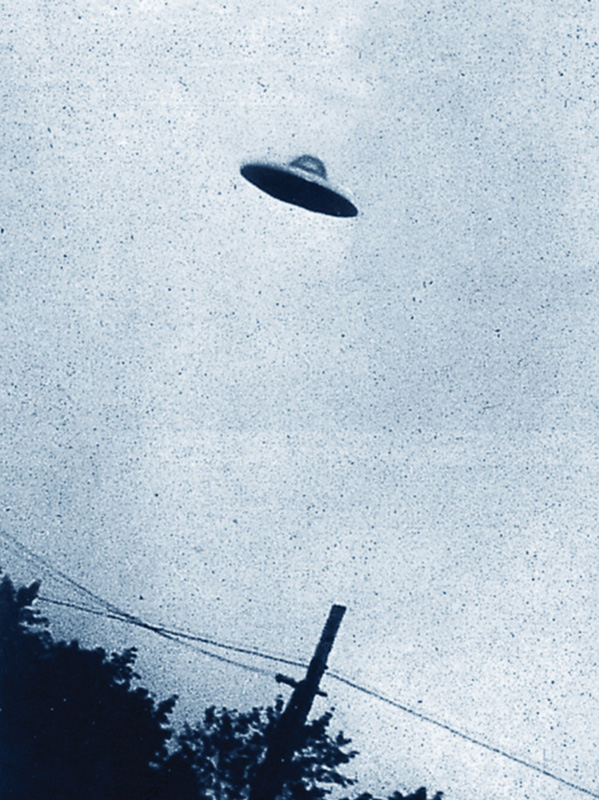
WHAT IT IS Spotting our alien cousins zipping around in the sky
WHY YOU WON’T DO IT Those little green men are nothing if not discreet
Are you one of those people who think E.T. and The X-Files are documentaries? Are you sure we are not alone and that little green men in flying saucers are constantly whizzing about our skies? If so, then no doubt you’d love to see a UFO for yourself – but what do you need to know when going out to look for aliens?
Strictly speaking, the term ‘UFO’ means Unidentified Flying Object. Just because you don’t immediately recognize an object doesn’t mean it’s automatically a flying saucer manned by a crew of little green men who want you to take them to your leader, and in fact the vast majority of UFO reports turn out to have fairly mundane explanations.
Concrete data about UFO sightings is understandably hard to accumulate and verify – reports are anecdotal by their very nature, and while some people are only too happy to trumpet their ‘close encounters’, others are far more sheepish about putting their reputations as level-headed individuals on the line. However, some estimates suggest around 80–95 per cent of all reported sightings can be explained in one way or another, leaving an obstinate core of 5–20 per cent that remain genuinely unidentified.
So if you think you might have spotted a UFO, try to employ a scientific and rational approach. Consider whether it might actually be one of the following and start by ruling out what it isn’t:
• An astronomical object such as a planet, moon or star. Venus, in particular, is often mistaken for something less familiar. If you see a bright light in the same place in the sky night after night, might it simply be a star? Purchase a star chart for quick reference.
• A ‘normal’ space phenomenon, such as an asteroid hurtling through the sky. Earth regularly passes through streams of shooting stars, and if a particularly large asteroid comes through our orbit, it will often make the news.
• A human aircraft. Technology is developing all the time and it’s worth considering whether you might have caught a glimpse of an experimental aeroplane design or a human spacecraft re-entering the atmosphere. It might even be just a satellite. NASA and other websites publish timetables of when certain bright satellites (such as the International Space Station and the Iridium communication satellites) will be visible at particular locations, so check their records for a potential explanation.
• A weather balloon. These useful meteorological tools have caused a good deal of confusion among UFO-spotters over the years, and can even trigger reports when they fall to Earth.
• A flare, a firework or a searchlight, all of which have explained many mysterious light flashes.
• Animal activity. Be prepared for your Martian landing craft to be a small group of migrating pigeons, or a flock of geese illuminated from below.
• Natural light phenomena. Mirages are caused when light rays are bent in such a way as to make us believe we are seeing things in the sky that are not really there. Certain extreme examples are known as Fata Morgana and can lead to distinctly earth-bound objects being transformed into unrecognizable forms in the sky. Moon dogs, meanwhile, are bright spots of light created by ice crystals refracting moonlight.
• You must also be aware of the dangers from a deliberate hoax. There’s money and fame to be made from tales of UFOs, and plenty of people are prepared to manufacture them. Consider, for instance, the 1980 Rendlesham Forest incident. Staff at a US Air Force base in eastern England, reported a string of unexplained lights, but in 2003 a security policeman claimed that they actually came from his Plymouth Volaré and were part of an elaborate practical joke.
If you are convinced that your UFO is none of the above, try to gather evidence. Reach for a camera or a tape recorder – or at the very least, make some notes and sketches. You might want to inform the authorities, but be prepared for them not to take you seriously.
If you are actively seeking out UFOs, where are the best places to look? Many ufologists see Roswell, New Mexico, and the US Air Force’s ‘Area 51’ in Nevada as their spiritual homes. Los Angeles is the city with most reported sightings, but what else would you expect from the home of the entertainment business? And what about Bonnybridge in Scotland? There have reportedly been more than 300 sightings annually in a town of 6,000, although sceptics point out that these reports have done no harm to local tourism.
In all your dealings, be prepared to accept the most logical explanation – even if it’s not the most exciting. Stay rational if you want to avoid accusations of being a crank.